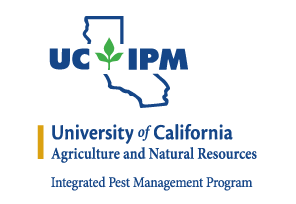By Pat Hitchcock, UC Master Gardener of Napa County
Napa County Master Gardeners recently had the opportunity to hear a wildlife specialist talk about managing vertebrate pests in gardens and landscapes. Participants were asked to list their five most troublesome vertebrate pests. Mine would be gophers, ground squirrels, birds, deer and voles.
To my surprise, the group's top five did not include ground squirrels but did include tree squirrels. Obviously, what is going on in my garden is not symptomatic of Napa Valley in general.
What is the problem with tree squirrels? Tree squirrels not only feed on nuts and fruits but also sometimes forage on ground crops such as strawberries and tomatoes. In addition, their gnawing behavior can damage tree branches when they chew off the bark to get at the cambium layer. They can also gnaw their way into buildings and through phone lines.
Finally, particularly in the fall, they have a habit of digging holes in the ground to bury acorns, nuts and seeds. The digging disturbs lawns and garden beds, and the buried seeds often sprout in spring. I suspect that the lone walnut tree on my property was the result of squirrel activity many years ago.
Squirrels are hard to control in urban and suburban settings because of their mobility and also because some people feed and provide nest boxes for them. I guess people perceive them as cute. But if you are trying to harvest almonds or other nuts from your backyard trees, you are more likely cursing them.
Three common tree squirrels inhabit Napa Valley. One species is a native, the Western Gray, and is considered a game animal. That means you need a permit from the California Department of Fish and Wildlife to kill them. Ditto for the Eastern Gray Squirrel, which was introduced intentionally into Golden Gate Park in San Francisco and has since expanded its territory.
The third species of squirrel commonly found in Napa County is the Eastern Fox Squirrel. This one tends to be the biggest pest but is not considered a game animal so may be hunted without a permit.
You can't deal with a problem until you identify it, so I've been observing the squirrels that live in my neighborhood. Gray squirrels have a white underside; the Eastern Fox Squirrel has a brown belly. It appears that I have some of both types.
If your squirrels are invading buildings, you can exclude them by finding all of their entrances and blocking them. Sheet metal and ¼-inch hardware cloth are useful for this approach. Note that squirrel entrances are usually up high near phone lines and in attics.
It's hard to keep squirrels out of trees due to their superb climbing and jumping skills. Sometimes, if there is enough other food around, they can be kept out of a fruit or nut tree with netting. But they can easily gnaw through netting if they want the fruit.
Trapping can help control squirrels, but if you use a live trap, be aware that it is illegal to relocate wild animals under California law. You are allowed to euthanize the Eastern Fox squirrels in a humane way. Shooting and gassing with carbon dioxide are considered humane, but drowning is not.
Several kinds of kill traps may be used on fox squirrels. Set them on routes that the squirrels travel, then anchor and cover them to prevent predators from taking the squirrel and trap away. For more detail on trapping, consult University of California Pest Notes online at www.ipm.ucanr.edu.
Chemical repellents have not been shown to be effective, and squirrels quickly become accustomed to noisemakers. Some dogs who have full run of a yard will keep squirrels at bay. Natural predators in urban areas have negligible effect on squirrel populations. Depending on local laws about firearms use in your area, it may be permissible to shoot the Eastern Fox Squirrel. But to shoot a Western or Eastern Gray Squirrel you need a permit.
After considering the options, I've concluded that the squirrel activity in my own yard is tolerable. The squirrels get most of the walnuts on my tree before I do, and I have to dig up walnut seedlings from time to time. But considering the rural nature of my property and the many other woody plants that self-sow (cotoneaster, privet, live oaks), these are problems I can live with. I guess I'll continue to buy my walnuts at the farmers market.
Master Gardeners are volunteers who help the University of California reach the gardening public with home gardening information. U. C. Master Gardeners of Napa County ( http://ucanr.edu/ucmgnapa/) are available to answer gardening questions in person or by phone, Monday, Wednesday and Friday, 9 a.m. to Noon, at the U. C. Cooperative Extension office, 1710 Soscol Avenue, Suite 4, Napa, 707-253-4143, or from outside City of Napa toll-free at 877-279-3065. Or e-mail your garden questions by following the guidelines on our web site. Click on Napa, then on Have Garden Questions? Find us on Facebook under UC Master Gardeners of Napa County.

